EY refers to the global organization, and may refer to one or more, of the member firms of Ernst & Young Global Limited, each of which is a separate legal entity. Ernst & Young Global Limited, a UK company limited by guarantee, does not provide services to clients.

This webcast from November 2023 addresses how boards and their organizations can set aside the traditional crisis playbooks to focus more on resilience.
Boards and their organizations are rethinking traditional approaches to today’s crises, which are increasingly frequent and interconnected. Many are taking a longer-term view that supports a more dynamic and agile response to crises. Find out how leading boards can enhance their oversight approach to crisis management and embed resiliency into the company culture, processes and resourcing. Panelists explore topics including:
- A look at today’s corporate crises. Hear about the different forms of crises facing today’s companies, why some crises never seem to end and how social media can accelerate the impact of a crisis.
- Rethinking crisis management. Find out why conventional approaches can hinder a dynamic response and how an enhanced crisis management framework can lead to more effective outcomes.
- How boards are evolving their oversight. Learn how leading boards are re-examining crisis management oversight to bring a resiliency mindset and focus on the long term.
The discussion is moderated by Kris Pederson, EY Americas Leader, Center for Board Matters.
Panelists
- Rupert Bondy, Executive Vice President and Chief Legal Officer, United Health Group
- Holly Gregory, Partner, Co-chair Global Corporate Governance Practice, Sidley Austin LLP
- Jeffrey Sallet, Partner, Investigations & Compliance, Forensic & Integrity Services, America’s Crisis Management Leader, Ernst & Young LLP
Key takeaways
- Crises come in different forms. Some may go unseen or undetected or may not be taken seriously at first. Others can happen suddenly with no warning; some incidents might seem completely improbable before they happen. Many boards and their organizations may feel like they are dealing with perma-crisis given the unique headwinds they are facing, but they must not cave into the anxiety that comes with that mindset.
- Today’s crisis environment is different in three key areas: velocity, interconnectivity and transparency. For example, incidents are often made dramatically worse by the speed and power of social media (velocity). Meanwhile, interconnected geopolitical events can lead to broader operational challenges (interconnectivity), and a negative customer experience or marketing misstep can become viral in a matter of minutes, with the impact to stock performance playing out in real time (transparency).
- Conventional approaches to crisis management may have downsides. Having overconfidence in the same old playbook, thinking you’re prepared, and taking each situation as it comes can lead to overinvestment in the wrong areas and missing important information. To be more resilient, boards should consider the four R’s of crisis management: Recognize the spectrum of potential crises; ready the organization; respond appropriately; and recover and reflect on lesson learned.
- Recognizing the broad spectrum of risks means being threat-driven, not event-driven. Boards and management teams should look at the external landscape beyond the business itself. Threats can come in many different forms. Boards need to understand how the company is preserving its brand and its assets and monitoring for a broad spectrum of potential events.
- To help ready the organization, boards should consider whether current policies and playbooks need updating. Implementing clear communication protocols and proactively identifying a team of internal and external advisors can position the organization to respond in a more timely and effective way. Leaders should not be exchanging business cards in a crisis. And pay attention to the basics: Board directors who know how to work with each other and with management are foundational to crisis management.
- Simulations can be invaluable in helping prepare boards and management. These should not become routine, and new twists and hurdles should be added each time. The simulations should feel real and allow participants to work together to get to the best response. Simulations can reveal where there are gaps or even where certain directors might have relevant experience that can help address certain types of crises.
- When it comes to crisis response, the appropriate internal and external teams should be quickly assembled to execute the playbook. It’s important to integrate the organization’s values into all response actions and address the emotional and physical toll of the incident on employees. It’s also important not to express definitive views before getting all the facts. Finally, the board should confirm that the company is complying with any relevant disclosure requirements.
- Recovering and reflecting on the lessons learned in a crisis can help identify areas for improvement, including information escalation protocols. It’s important to learn from any missteps and reflect on how things went and how the company can be incrementally better. Boards should ask management about its review of business continuity and resilience plans and how it plans to integrate any lessons learned into broader risk management.
- The bottom line for boards is to evaluate current approaches to crisis management; consider interdependent risks and broad potential impacts; set clear expectations with management about crisis communications; embed lessons learned from previous events and simulations; evaluate skills and experience needed as disruptive events continue; and determine the board’s role.
What we heard from the audience
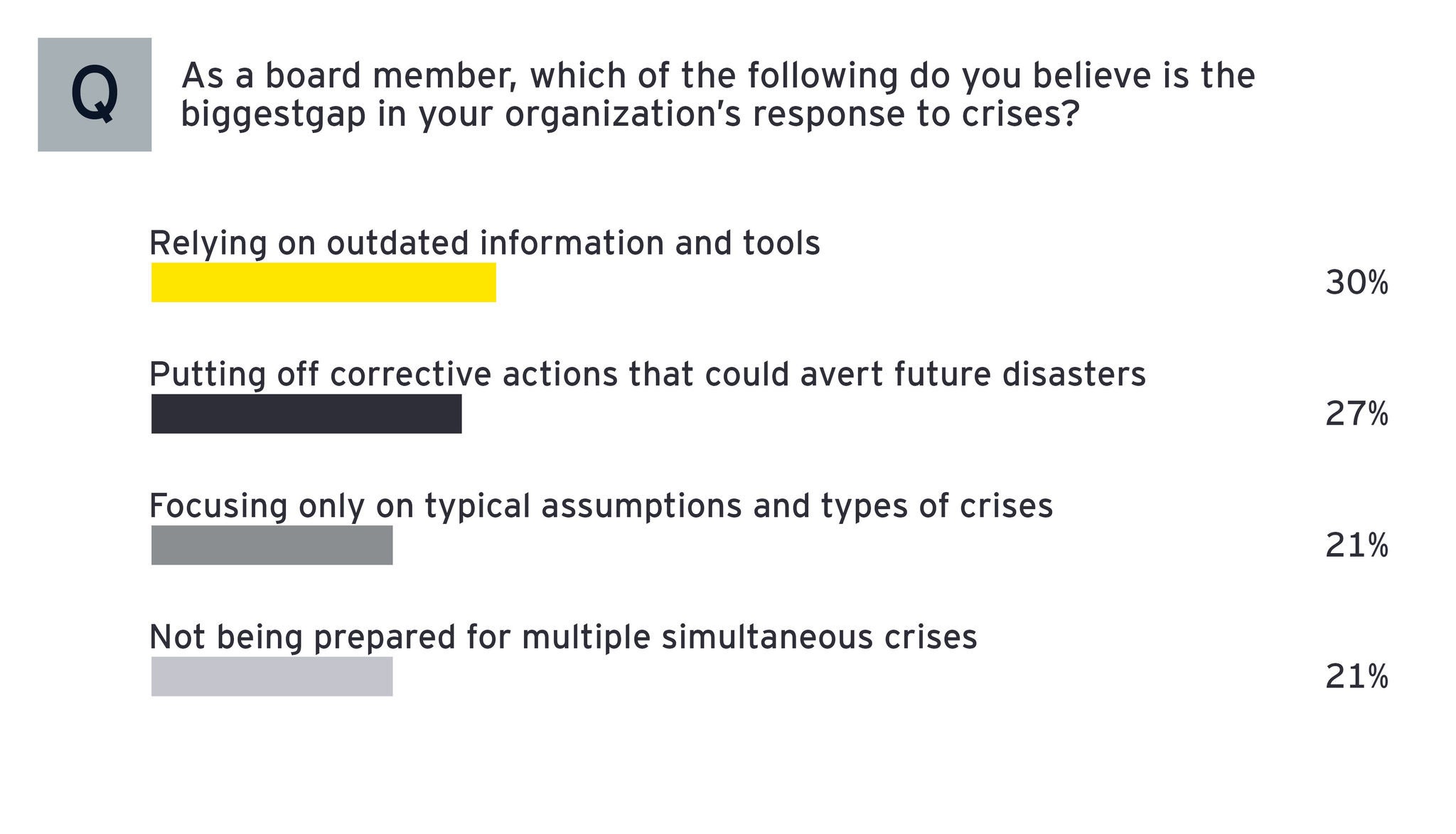
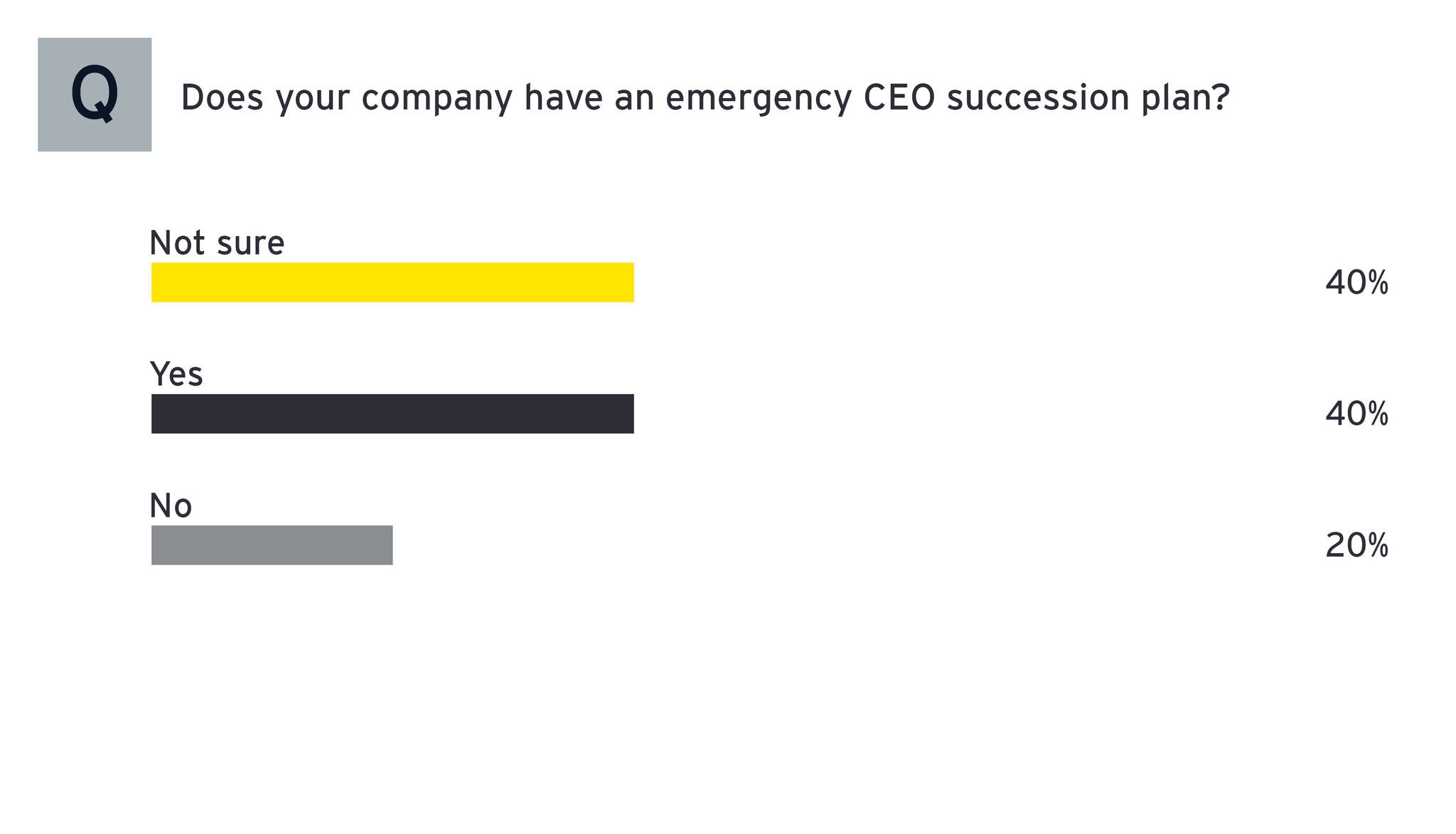
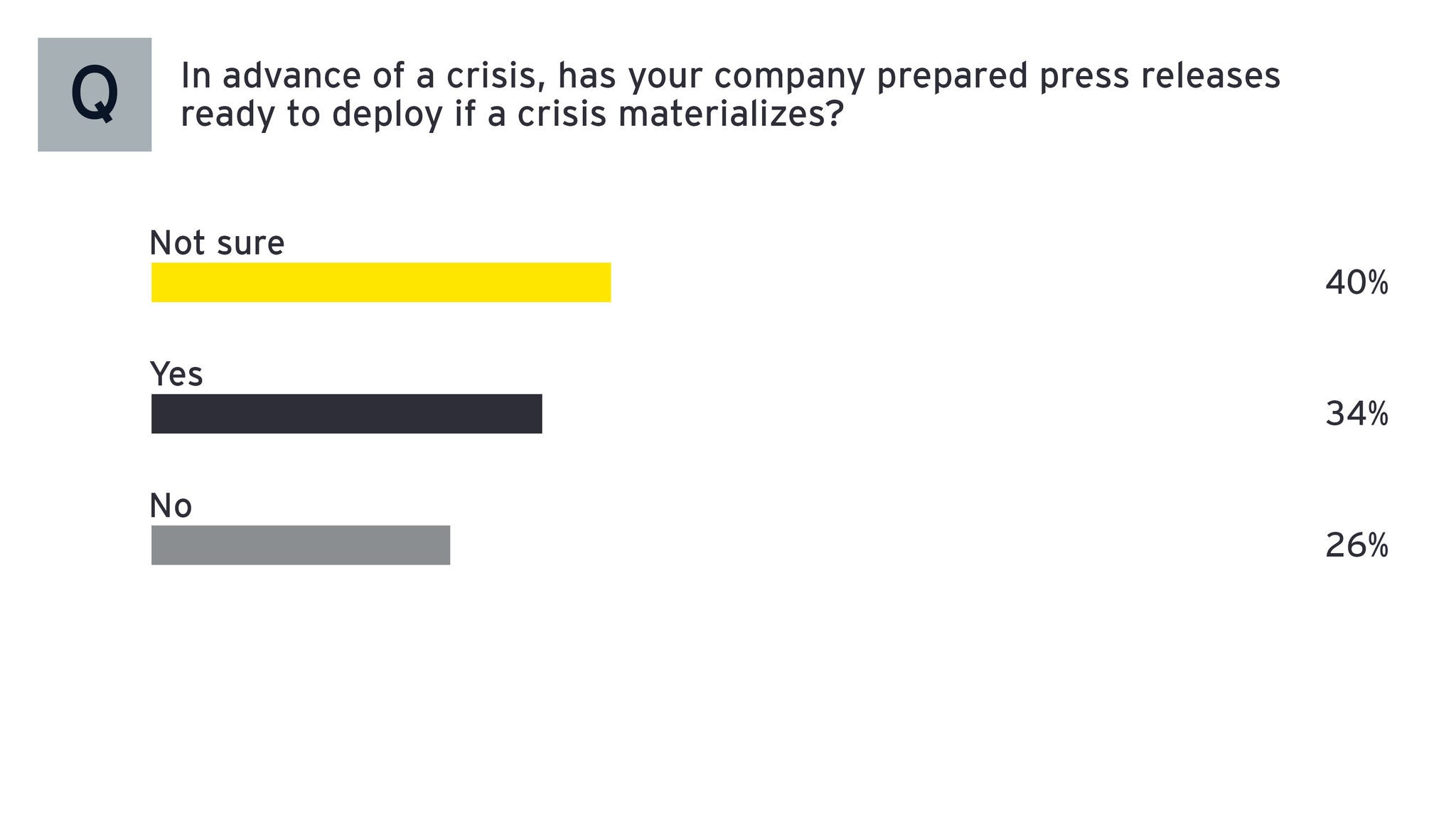
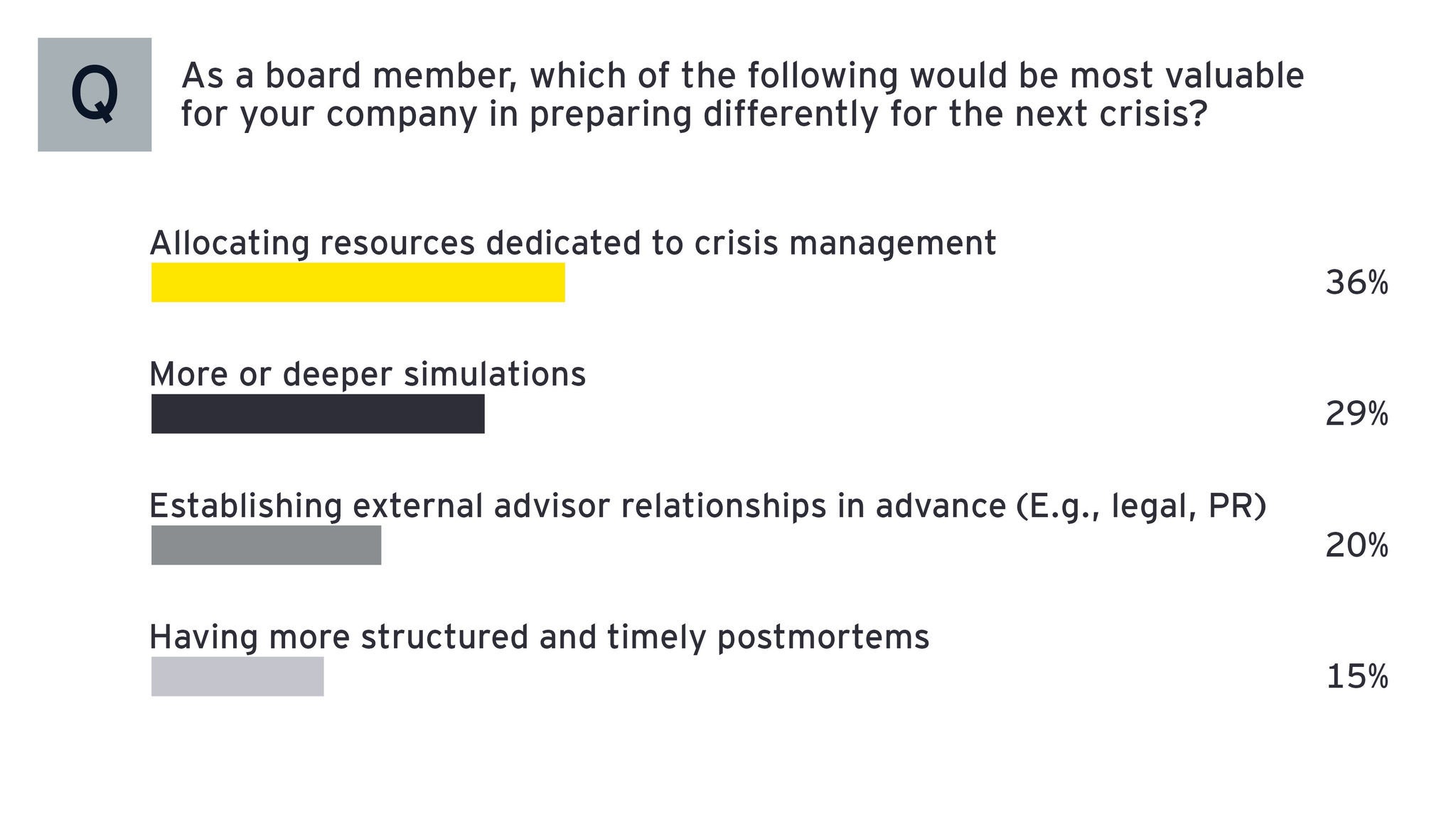
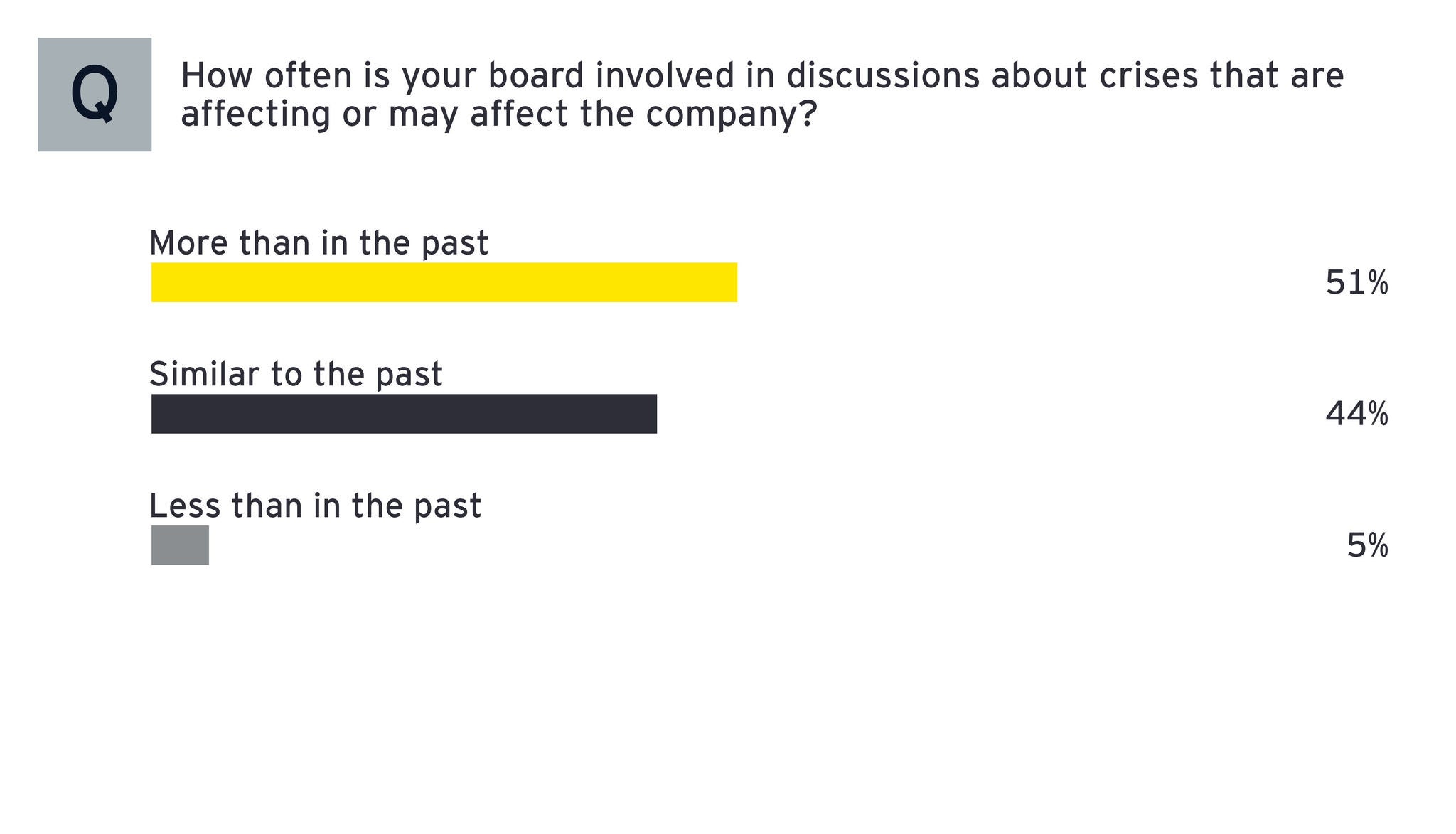
Webcast
CPE credits: 1.4
Time
your local time


